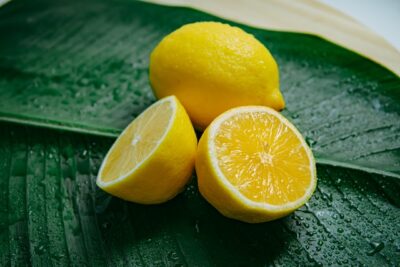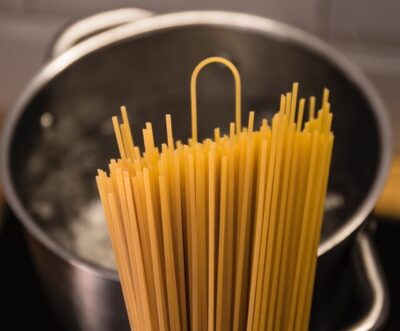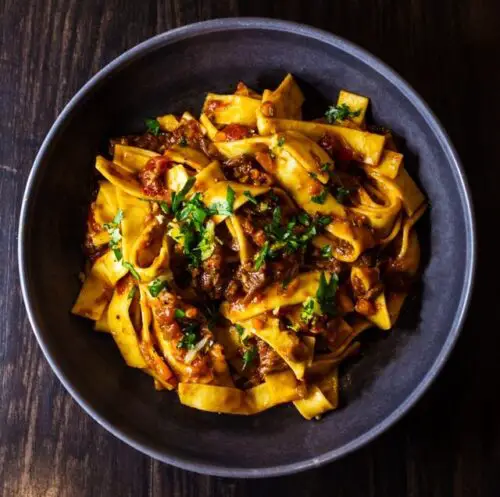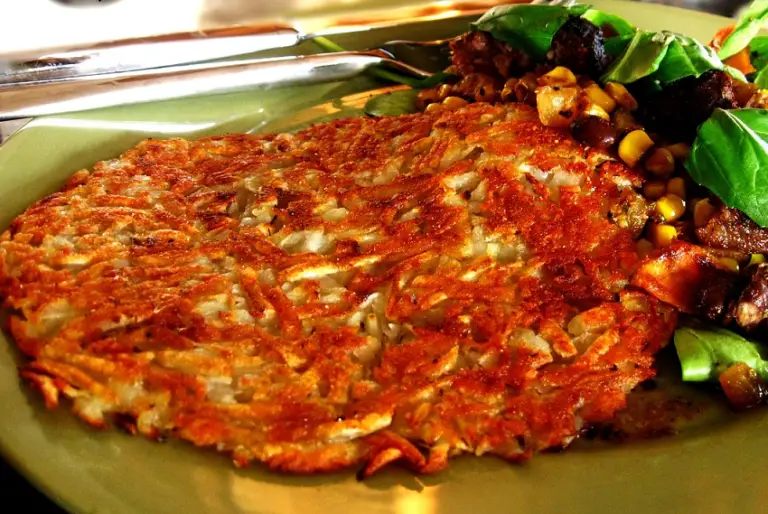I love pasta. It is easy to cook. You can cook it in a sauce, or just with toss with garlic oil. You can even stir fry for an asian style pasta.
When you look at recipe videos on making pasta, the most common instruction you might hear is, add a pinch of salt, and then the chef proceeds to add more than a pinch of salt. So you follow him. And then, it turns out your pasta is too salty. Now what?

The easiest solution to make you pasta less salty is to add a squeeze of lemon or lime on to your pasta dish. This will not reduce the salt content in your pasta. But it does a great job of balancing the saltiness in taste. It also adds a touch of freshness to your pasta. This method works for both sauce or cream based pasta or stir fry pasta.
Adding lemon/lime juice is just one of the ways to save a salty pasta. But what if you don’t have any lemon or lime at the point of time. Can you still save your pasta?
Ways to save a salty pasta Dish
1. Adding Acid to the dish
As mentioned above, the easiest way if you have any lemon/lime in your fridge, is to add them to your pasta. Just by adding a squeeze of lemon, you can mask your salty pasta, and give it a new tangy and fresh twist at the same time.
You can also add vinegar to your pasta to combat the saltiness. Definitely go with a mild vinegar. If not, you want to add a tiny teaspoon first, and then taste it, and adjust according to taste.
Don’t over do the acid, or you will end up with a sour dish.
2. Add sweetness to the dish
You can also consider adding sugar/honey to neutralize the saltiness. Be sure to taste as you are adding. You don’t want to end up with a pasta that is both too sweet and too salty. I think this works best if your pasta is only slightly salty.
If the above 2 methods won’t work for your pasta dish, you should determine if it is the pasta noodle that is salty or if it is the sauce that is salty.
3. Cooking more pasta in unsalted water

When faced with overly salty pasta noodles, one of the most effective solutions is to cook an additional batch of pasta noodles, this time deliberately leaving out the salt.
The unseasoned pasta acts as a blank canvas, ready to balance out the strong salty flavor from the initial batch. By cooking this additional portion in unsalted water, you’re essentially creating a neutral base.
By mixing the unsalted pasta with its salty counterpart, the flavors will meld together, resulting in a more balanced dish. As the two batches blend, the intense saltiness will be diluted, yielding a much more palatable meal.
However, be prepared for a larger quantity of pasta than initially intended. This could be seen as a bonus, providing you with leftovers for the next meal.
Conveniently, pasta stores quite well in the refrigerator. Simply place it in an airtight container, and it’s ready for reheating or repurposing into a new dish in the coming days.
4. Adding more water/stock to the sauce
When dealing with a salty sauce, the nature of the sauce determines the best corrective action.
If you’re working with a tomato-based sauce, dilution is a good place to start. However, simply adding water might reduce the overall robustness of its flavors.
Instead, consider enhancing the sauce with fresh ingredients. Incorporating additional tomatoes and onions can prove beneficial. As they cook and break down, these fresh ingredients not only absorb and disperse the excess salt but also contribute their natural flavors.
If you have unsalted stock on hand, it serves as a better alternative to water. The stock will maintain the sauce’s depth while addressing the saltiness.
On the other hand, if you’ve created a cream-based sauce and it’s tasting too salty, be cautious when thinking of adding more store-bought cream. Many commercial creams have salt content which could exacerbate the problem.
A more effective solution would be to introduce milk. However, ensure you’re mindful of the temperature. Adding milk to a boiling sauce might result in curdling, which could further compromise the sauce’s texture. To avoid this, maintain the sauce on low heat during this process.
5. Less garnishing if the garnish is salty
Finally, be mindful when using parmesan cheese for garnishing. Parmesan inherently has a salty flavor profile. If your pasta already leans towards being too salty, it might be best to skip or limit the parmesan topping.
How to avoid cooking a salty pasta Dish
If you’re a fan of culinary television, you’ve probably noticed a common thread among all professional chefs and contestants alike: the habitual tasting of dishes during the cooking process. This simple yet vital step holds the key to perfecting any meal’s seasoning.
Ensuring your pasta dish isn’t overly salty begins with tasting as you cook.
1. Taste the Pasta Water
When boiling pasta, it’s common to add salt to the water for flavor. However, a crucial aspect often overlooked is the residual pasta water, which is frequently used as an ingredient in many sauce recipes. By tasting the salted water before adding pasta, you can determine its salt concentration and adjust if necessary. Remember, overly salted water will result in saltier pasta and, by extension, a saltier dish.
2. Be Aware of Naturally Salty Ingredients
Ingredients like bacon, anchovies, parmesan, and capers, among others, are naturally high in salt. When using such ingredients in your pasta sauce, be cautious when adding extra salt. Always taste the sauce before and after introducing additional salt. Trust your palate; it will guide you to the perfect balance.
3. Consider All Seasoning Components
If you’re crafting a stir-fried pasta, ingredients such as soy sauce, fish sauce, or teriyaki can be quite salty. Be aware of the salt content in these sauces and adjust your seasonings accordingly. It might be unnecessary to add any additional salt, but always taste to confirm.
In essence, the key to avoiding an overly salty pasta dish lies in the iterative process of tasting and adjusting. By being aware of the salt content in your ingredients and continuously monitoring the flavor, you can confidently serve up a pasta dish that is seasoned to perfection.



